1-8-13
The Deep: Art Has that Potential, to Be Something Bigger
By Diane Sippl
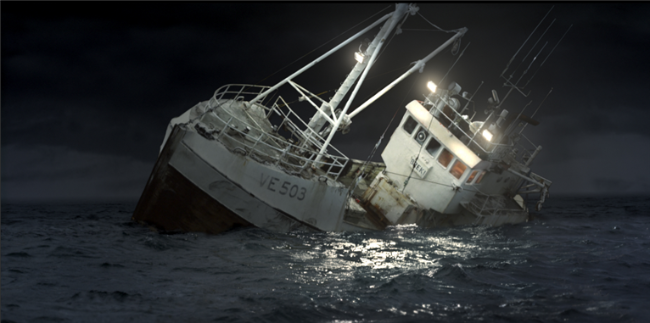
“I’d like people to one day find out what defines me….”
Baltasar Kormákur
One of the joys of the Scandinavian Film Festival Los Angeles is the chance to follow the evolving career of an extraordinary and prolific talent from one “Nordic” season to the next right in Beverly Hills. At the Writers Guild Theater (135 South Doheny) on January 12th, 13th, 19th, and 20th, the festival, now in its 14th year, will showcase 25 films, theatrical and documentary features as well as shorts from the region, many of them both international prize winners and awards contenders in Hollywood.
Audiences will surely remember
the thrill of Baltasar Kormákur’s offbeat detective mystery, Jar City (2006), that had them laughing
when they wanted to be cringing all the while they were unexpectedly informed
about shards of Iceland’s culture. His
talent fills the screen again this year, when he is bigger than ever in world
cinema. I had a chance to talk with him during his visit to the Los Angeles
County Museum of Art recently where he commented on his new work in a
post-screening discussion. On Opening
Day of the Scandinavian Film Festival Los Angeles, Saturday January 12th,
local fans can see his film at 1:45 pm at the WGA Theater.
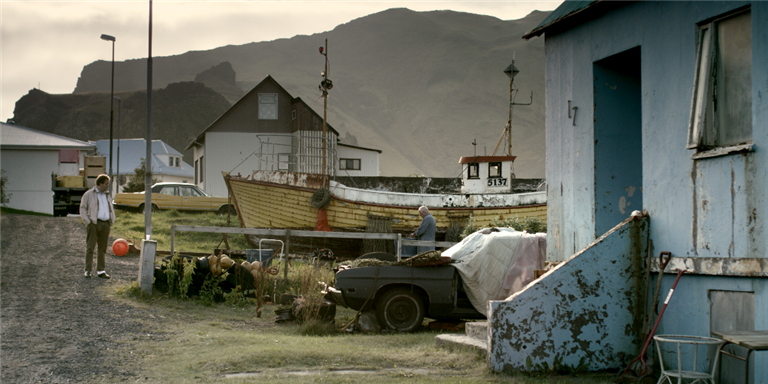
Bridging the intimate with the epic in a true story that is at once a dramatic adventure and an allegory of Iceland in recent years, Baltasar Kormákur takes us to the chilling depths of the blackest of waters and skies alike. The Deep is his latest opus after seven other feature films in diverse genres, and it is his country’s submission for the Best Foreign-Language Film Award from the Academy of Motion Picture Arts and Sciences. In The Deep, Gulli, an unlikely hero (Ólafur Darri Ólafsson, in a striking resemblance to his real-life counterpart, as the end credits of the film reveal), ponders a host of existential questions as he fights for survival after the wreck of his crew’s fishing boat that we see in underwater footage. Thereafter much of the screen is filled with darkness, except for the light of Gulli’s inner faith as he reminisces, proclaims his misgivings, prays, and hopes all the while he forges ahead through the midnight sea like some kind of human whale.
“We live by the sea, and we’re about the sea. I used to swim with my mom, and sail a bit, and the water comes right up to our house sometimes, so it’s part of us, and that’s why it absolutely had to be shot on location, in the North Atlantic Sea. The color, the darkness of the water — anyone who makes films knows that water’s one of the hardest things to get right,” comments the writer-director, having made The Deep in-between American ventures but also as another installment in his films of the sea.
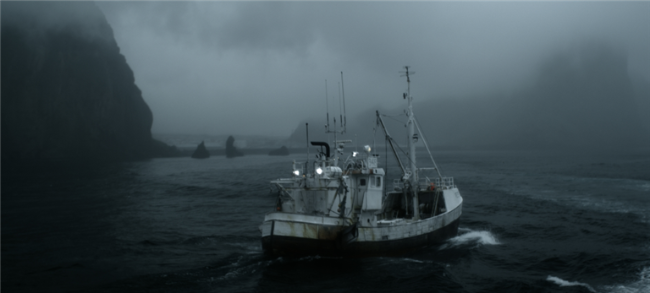
Regarding the crash that fatally destroys the vessel and its mates, he explains, “In 1984 this probably hadn’t been dealt with yet, these 'cliffs' in the ocean, though it happens a lot, in 20 to 30 seconds in this kind of landscape. That sudden shock is not so unlike what happened to the country. As a nation, Iceland became a shipwreck in 2008. All three of the banks went bankrupt, and we went sideways. I’ve lived this story.”
Yet the ocean is not the only danger lurking in Iceland; there’s also the terrain of the land. Kormákur remarks on another aspect of location shooting: “The volcano Gulli revisits in his mind really happened, in 1974, and Gulli’s walking on lava. It’s ridiculous. They say that Icelandic people are the only ones who go out to watch a volcano.”
About the lead actor, Ólafur Darri Ólafsson, Kormákur tells us, “As soon as I cast him in the role — and the reason is obvious, how he looks — it was especially interesting, because odds were, only the captain of this boat might have survived, given the shape he was in and what a strong swimmer he was. But Gulli wasn’t physically trained, and he was a hard drinker — to live on a boat like that, you might as well be…”
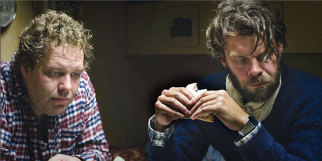
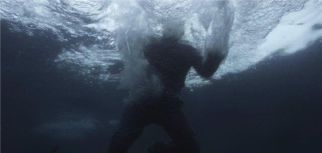
“I bought the boat, so that everyone could get used to it. But once we were out of the boat, there wasn’t much light. It was tricky, very difficult to direct and shoot in that blackness, but I wanted to be true to the story. And I think it’s very beautiful at night.”
The post-credit footage of the hero behind the scenes was shot the day after the real Gully was in the hospital. “It’s maybe difficult for us to imagine his emotional and social loss. The hypothermia the others suffered means that the brain, in 5-10 minutes after entering such freezing-cold water, gets the message that you’re burning, and you die. In shooting the film, I had to jump in the water with Gulli and pull him on a rope like a human doggie.”
Looking back at the overall mission of making The Deep, Kormákur reflects, “The challenge was to serve the story, and the character had to work within the story. It has a wide, metaphorical meaning: the idea, the nation, the era. This comes from my experience in the theatre, and also my father. He’s a Catalan artist from Barcelona, and he has painted mythology all his life. I never thought about it until now (it’s like your mom’s food — you take it for granted). Art has that potential, to be something bigger.”
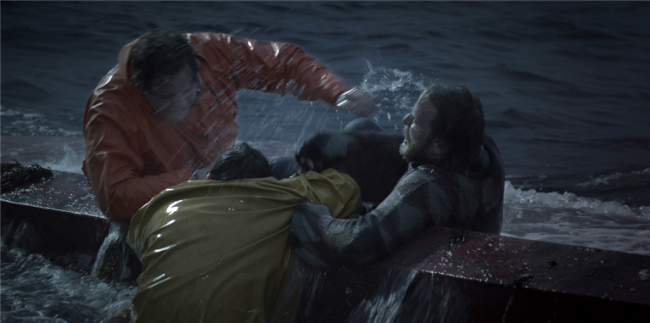
And looking at Icelandic culture at-large, this writer and director of plays and films alike notes, “Iceland still has the same language after a thousand years because we’re so isolated. We’re close-knit there, especially artists. There’s a lot of tension, like at a Christmas dinner, but also a lot of love.”
About his life as an actor on both the stage and the screen, he tells us “I want to be instinctive, not analytical, especially regarding myself, both as an actor and a director. I’m always afraid of getting pigeon-holed, doing what people expect of me. That’s why I admire Ang Lee and Milos Forman. I’d like people to one day find out what defines me instead of me saying it.”
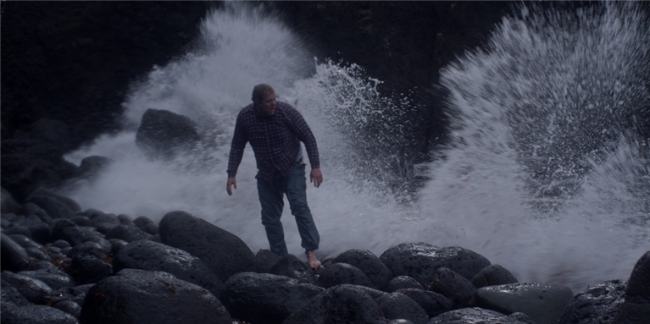
Getting back to his second film as a director, The Sea (2002), Baltasar Kormákur reminds us, “It’s related to this film, showing how Iceland was working its way into the financial collapse, along with fishing quotas. After three months I saw the sun — the mountain range there blocks it in the winter, except for an hour or two, when the sun is so low in the sky.”
And back to Gulli and The Deep: “I didn’t want to entertain, but to be moving at the character’s pace, to be true to his story. The movie had to walk in his shoes. The reason he survived? There is no reason…”
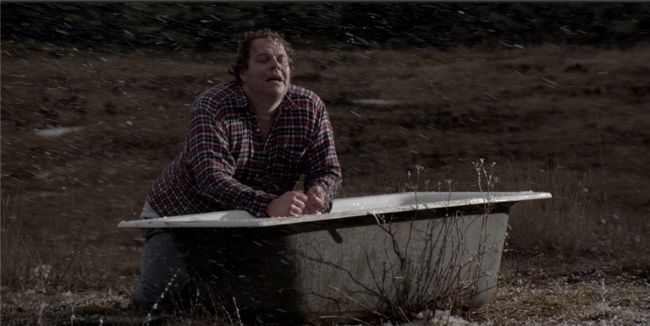
The Deep
Director: Baltasar Kormákur; Producers: Baltasar Kormákur, Agnes Johansen; Screenplay: Jón Atli Jónasson, Baltasar Kormákur, based on the play by Jón Atli Jónasson; Cinematographer: Bergsteinn Björgúlfsson; Editors: Sverrir Kristjánsson, Elísabet Ronaldsdóttir; Production Designer: Atli Geir Grétarsson; Music: Ben Frost, Daníel Bjarnason; Sound Design: Kjartan Kjartansson, Ingvar Lundberg.
Cast: Ólafur Darri Ólafsson, Jóhann G. Jóhannsson, Björn Thors, Thröstur Leó Gunnarsson, Thorbjörg Helga Thorgistsdóttir, Walter Geir Grímsson, Stefán Hallur Stefánsson. Theódór Júlíusson.
Color, DCP, 93 min. In Icelandic with English subtitles.